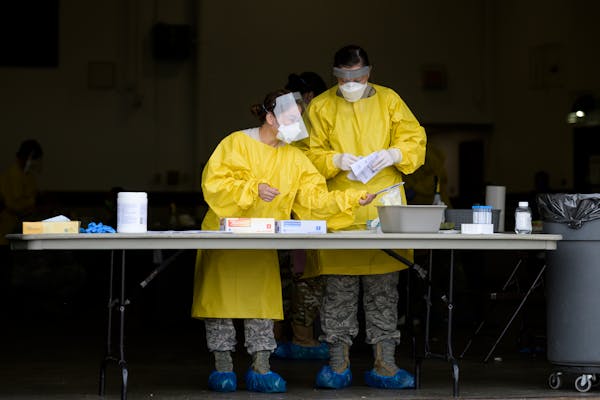For some pollen allergy sufferers, eye irritation at this time of year is nothing new — but with the newest strain of COVID-19 circulating, doctors are suggesting that if you have pink eye and a fever, you should test for COVID.
XBB.1.16, also known as Arcturus, is the newest subvariant of the omicron variant of COVID-19 spreading throughout much of the world. Like many COVID variants and subvariants that came before it, Arcturus is believed to be the most infectious strain of COVID yet.
"It does seem to be more transmissible than the last variant XBB.1.5," Dr. Timothy Friel, chairman of Lehigh Valley Health Network's Department of Medicine, said. "That's very telling because we thought XBB.1.5 was perhaps one of the most transmissible viruses that we've ever encountered."
Arcturus hasn't become the dominant strain of COVID in the U.S. yet — that position is still held by omicron variant XBB.1.5 — but it's making gains. Arcturus has been identified in at least 34 countries and in India it is the dominant strain already.
One of the oddest things about the Arcturus subvariant is that it appears to be correlated with increased cases of conjunctivitis, the inflammation of the outer membrane of the eye better known as pink eye. Conjunctivitis is usually caused by bacterial infections, but some viruses, such as coronavirus and adenovirus, an agent of the common cold, can cause it too.
Dr. Jeffrey Jahre, St. Luke's University Health Network section chief emeritus of infectious diseases, said the fact that Arcturus can cause pink eye is not in and of itself notable, as other strains of COVID have caused pink eye in about 3% of patients. But pink eye, especially in children and babies, seems to occur more frequently with Arcturus.
"It seems that there is a far greater percentage of individuals with absolute bona fide Arcturus who have conjunctivitis," Jahre said. "Although absolute conclusive evidence requires a number of repeated observations, in this case, it does appear to be the case."
He added that with other strains of COVID, it has been rare for pink eye to be the only presenting symptom of a COVID infection, but with Arcturus, this seems to be happening more frequently, although fever also tends to be present.
Friel said that even though pink eye seems to be more likely from an Arcturus infection, coughing and sore throat are still the most common symptoms. If you have any COVID-like symptoms, you should get tested, he said.
Pink eye symptoms include the whites of the eye turning red or pinkish as well as itchiness, gritty feeling, tears, sensitivity to light and discharge that forms a crust that can make it difficult to open the eye.
Jahre said at this time of year when pollen has filled the air, there is a high chance that most cases of pink eye that emerge will be allergy-related, but differentiating between allergic conjunctivitis and viral conjunctivitis may be difficult and may require evaluation by an eye specialist.
"If a fever is present, it is more likely to be COVID," Jahre said. "If another individual in the family has diagnosed COVID, then anyone else in the family experiencing conjunctivitis symptoms should assume that he or she may also have COVID and take appropriate health measures and precautions to avoid affecting others."
While pink eye isn't fun, it fortunately usually doesn't require treatment from a doctor. But Jahre said if the conjunctivitis worsens over 24 hours, then that would be a good indicator to see a physician or an eye specialist.
The good news about Arcturus is that it doesn't seem any more likely to result in severe COVID-19 illness than any other recent variant, Jahre said. He also said it's likely that this summer will follow the last couple, where COVID cases and hospitalizations dipped.
Jahre added that for those most at risk, such as those with compromised immune systems, certain pre-existing health conditions and the elderly, vaccines are still effective at preventing the worst outcomes of a COVID infection.

JD Vance, an unlikely friendship and why it ended

Lewis Lapham, editor who revived Harper's magazine, dies at 89

Body of missing Minnesota hiker recovered in Beartooth Mountains of Montana
Mike Lindell and the other voting machine conspiracy theorists are still at it

